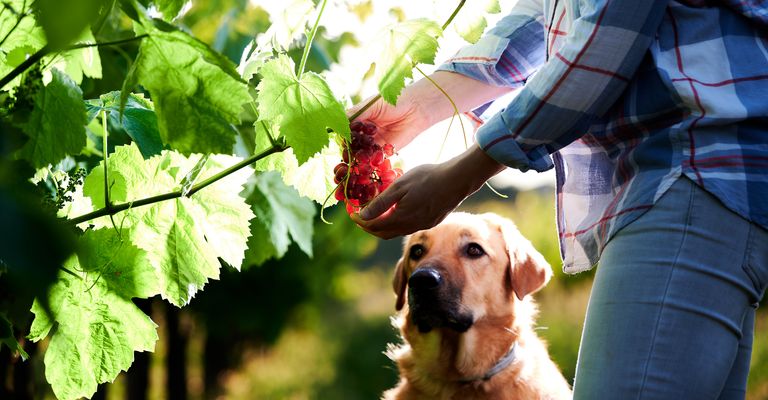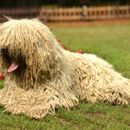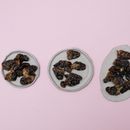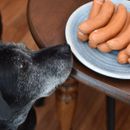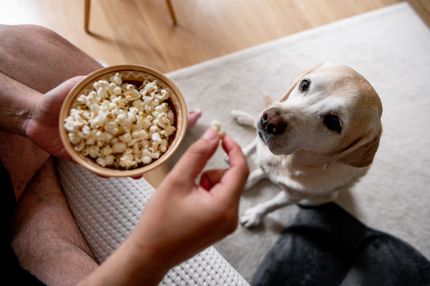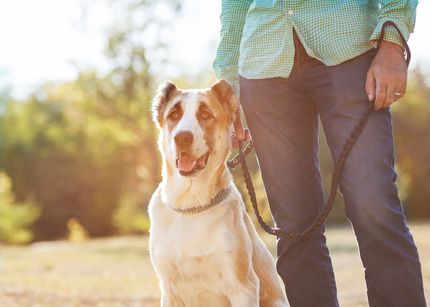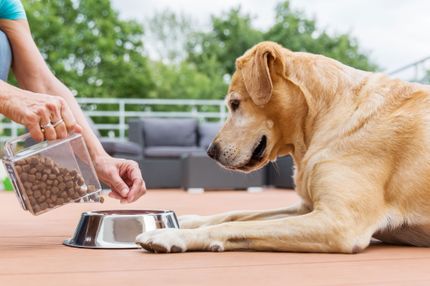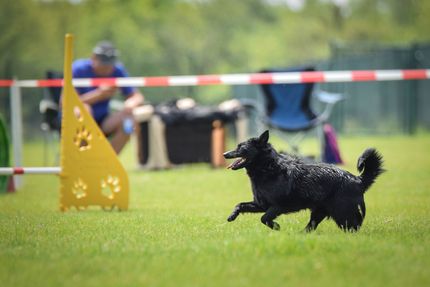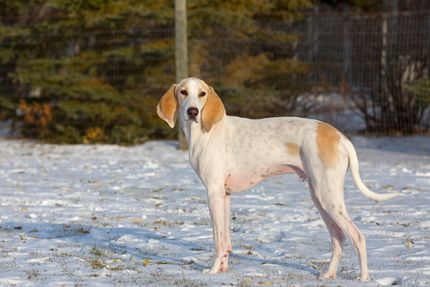The question of whether dogs can eat grapes is of great importance to pet owners who care about the health and well-being of their four-legged friends. Grapes, both fresh and dried in the form of raisins, are popular snacks among humans, but their effects on dogs can be serious and potentially life-threatening. The toxicity of grapes to dogs is a topic that, despite intensive research, still raises questions, particularly regarding the exact cause of toxicity, the symptoms of poisoning and the amount that can be dangerous to a dog.
Understanding why grapes are toxic to dogs requires an awareness of the current knowledge and gaps in research on the subject. It is crucial to know the potential symptoms a dog may show after consuming grapes in order to act quickly and seek veterinary help. In addition, the question of how many grapes can poison a dog is of particular interest, as sensitivity to grapes can vary greatly between different dogs. This introduction introduces a complex topic that requires a deep understanding and caution from dog owners to ensure the safety and health of their pets.
All information on whether and how good grapes are for dogs
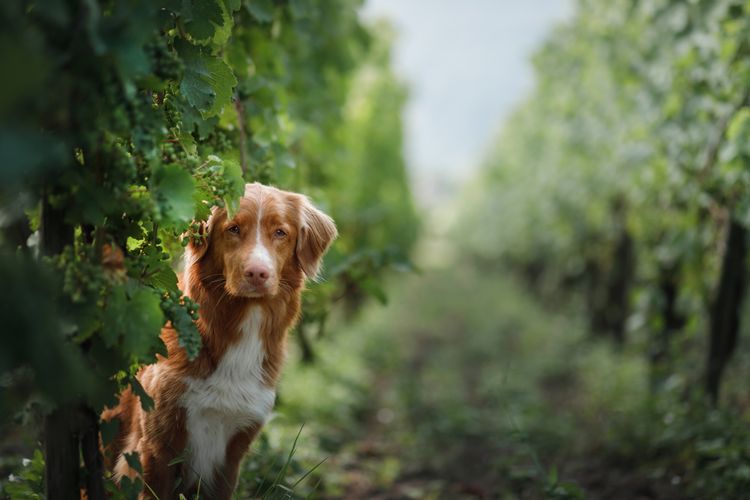
Why are grapes toxic to dogs?
Grapes contain one or more substances that are toxic to dogs, although the exact cause of toxicity has not yet been identified. It is known that eating grapes can cause acute kidney failure in dogs. Sensitivity to grapes varies greatly between dogs; while some dogs can consume large quantities without becoming ill, just a few grapes can cause severe symptoms in other dogs. Researchers have not yet identified any specific toxins or pesticides that could consistently explain this reaction, suggesting that the toxicity may be due to a genetic predisposition in some dogs or caused by an as yet unknown substance in the grapes. The fact that both fresh and dried grapes (raisins) are toxic underscores the need to keep them away from dogs, regardless of the grape variety or color.
What symptoms do dogs that have eaten grapes show?
After eating grapes, affected dogs can show a range of symptoms, from mild to severe. The first signs include vomiting and hyperactivity, which often occur within a few hours of consumption. As it progresses, depression, lethargy and a loss of appetite can occur. One of the most serious symptoms is the development of acute renal failure, characterized by decreased urine production, signs of abdominal pain, and in severe cases, diarrhea. Should these symptoms occur, it is crucial to seek veterinary help immediately, as acute kidney failure can be life-threatening and requires rapid treatment to improve the chances of survival.
How many grapes are dangerous for a dog?
The toxic dose of grapes for dogs is not precisely known and appears to vary considerably between animals. Even small amounts, just a few grapes or raisins, can cause serious health problems in some dogs, while others can consume larger amounts without showing immediate negative effects. This variability makes it difficult to determine a "safe" amount, which is why it is generally recommended that dogs are not fed grapes or raisins. If a dog has eaten grapes, it is important to note the amount and watch for symptoms while seeking veterinary advice to determine if treatment is needed.
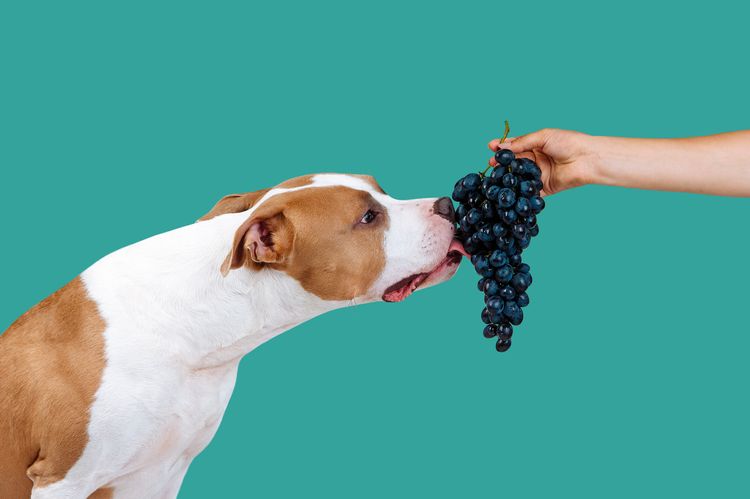
Is there a difference in toxicity between red and green grapes?
To date, there is no scientific evidence that toxicity varies between red and green grapes. Studies and reports of poisoning in dogs have shown that the toxic effect has been observed in both red and green grapes and in all varieties and origins. The main finding is that regardless of the color, variety or condition (fresh or dried) of the grape, there is a risk of toxicity to dogs. Thus, all grapes should be considered potentially dangerous for dogs and should be avoided.
How quickly should dogs be treated after eating grapes?
As soon as a dog is found to have eaten grapes or raisins, immediate action should be taken. Treatment is most effective if given within two hours of ingestion. During this period, induction of vomiting can often prevent the grapes from being absorbed further in the intestine. It is crucial to consult a veterinarian as soon as possible, as a quick response increases the chances of minimizing potential toxic effects and preventing acute kidney failure.
Can dogs eat raisins as they are dried grapes?
Raisins are dried grapes and therefore just as toxic to dogs as their fresh counterparts. In fact, raisins can potentially pose an even greater danger due to their concentrated nature. Even small amounts of raisins have caused severe symptoms of poisoning in some dogs. Therefore, it is important to keep dogs away from raisins and find alternatives that are safe for dogs to consume.
Are there any long-term effects for a dog that has eaten grapes and been treated?
The long-term effects of grape or raisin poisoning in dogs depend on the severity of the initial reaction and the speed of treatment. Dogs that have been treated early and show no signs of kidney failure often have no long-term health problems. However, dogs that develop acute kidney failure may be left with permanent damage to the kidneys, which may require lifelong management and monitoring.
Are grapes equally toxic to all dog breeds?
The available information suggests that the toxicity of grapes and raisins is not breed specific. Rather, sensitivity appears to vary greatly from individual to individual, regardless of the dog's size, breed or health status. All dog breeds should therefore be equally protected from eating grapes and raisins.
Can certain parts of the grape (such as the skin or seeds) be more dangerous than others?
There is no clear evidence that certain parts of the grape are more dangerous than others. Toxicity appears to be present in the entire fruit, including skin, flesh and seeds. The danger comes from the grape as a whole, regardless of which parts are consumed. It is therefore advisable to deny dogs access to any part of the grape to avoid the risk of poisoning.
What should I do if my dog has eaten grapes?
If a dog has eaten grapes or raisins, follow these steps:
- Keep calm and try to find out how many grapes or raisins have been eaten.
- Contact a veterinarian or emergency veterinary clinic immediately. They can give specific instructions on what to do next.
- Follow the vet's instructions, which may include inducing vomiting or presenting directly to the veterinarian's office.
- Observe the dog for signs of intoxication, such as lethargy, vomiting or diarrhea, and inform the veterinarian of any symptoms observed.
In conclusion, the toxicity of grapes and raisins to dogs is a serious health risk that should not be underestimated. Regardless of the color, variety or condition of the grapes, it is of utmost importance to keep dogs away from these fruits to avoid the risk of poisoning. The quick response of owners upon suspicion of ingestion, along with seeking immediate veterinary attention, can be crucial in preventing or minimizing serious health consequences. In addition, pet owners should be aware that no breed of dog is immune to the potential dangers of grapes and raisins and that individual sensitivities can vary greatly. Ultimately, prevention is the key to protecting our four-legged friends from the dangers that these otherwise harmless snacks can pose to humans.
Sources and relevant links
Grape, Raisin, and Currant Poisoning in Dogs
Accessed on 29.02.2024
